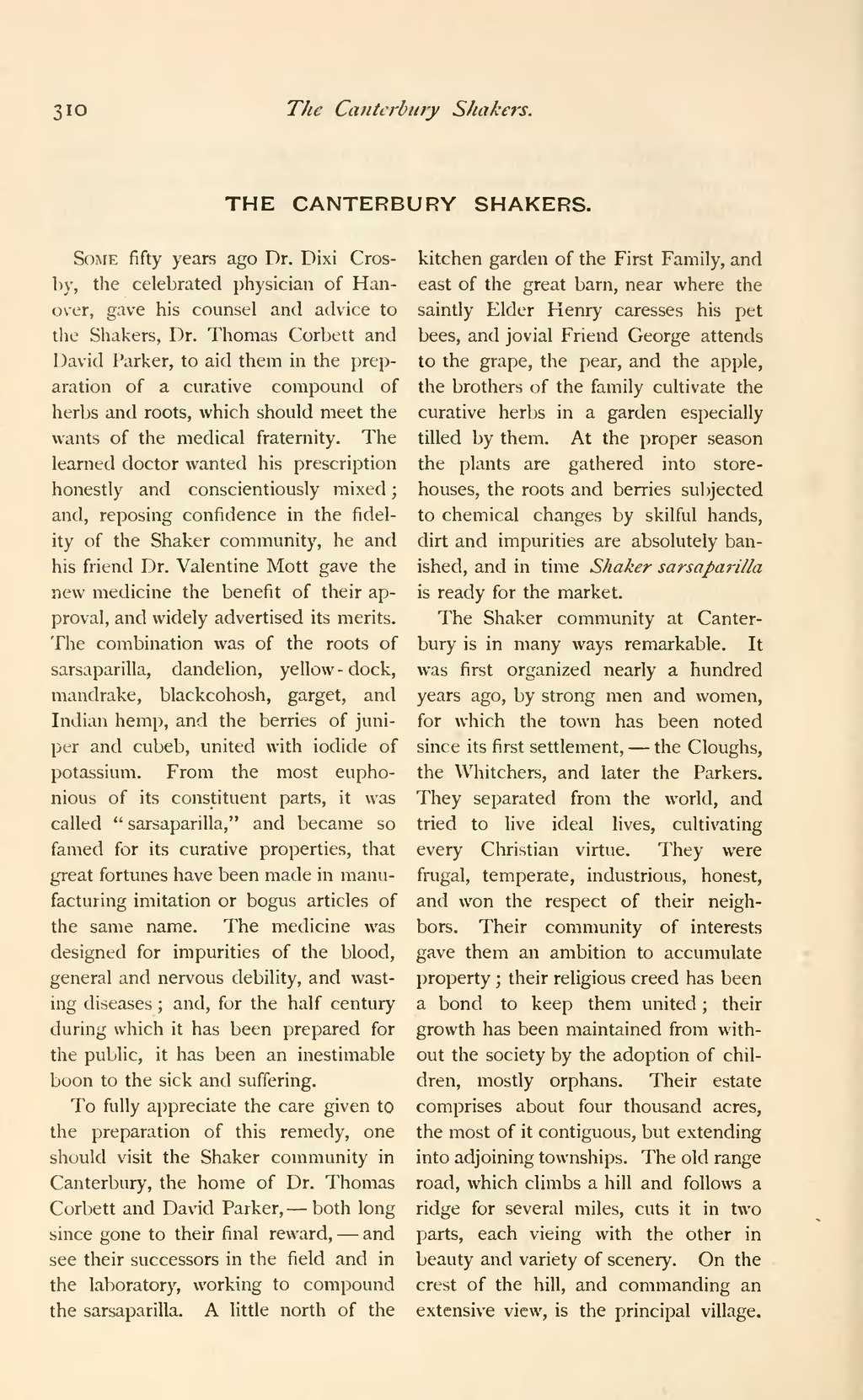THE CANTERBURY SHAKERS.
Some fifty years ago Dr. Dixi Crosby, the celebrated physician of Hanover, gave his counsel and advice to the Shakers, Dr. Thomas Corbett and David Parker, to aid them in the preparation of a curative compound of herbs and roots, which should meet the wants of the medical fraternity. The learned doctor wanted his prescription honestly and conscientiously mixed; and, reposing confidence in the fidelity of the Shaker community, he and his friend Dr. Valentine Mott gave the new medicine the benefit of their approval, and widely advertised its merits. The combination was of the roots of sarsaparilla, dandelion, yellow-dock, mandrake, blackcohosh, garget, and Indian hemp, and the berries of juniper and cubeb, united with iodide of potassium. From the most euphonious of its constituent parts, it was called "sarsaparilla," and became so famed for its curative properties, that great fortunes have been made in manufacturing imitation or bogus articles of the same name. The medicine was designed for impurities of the blood, general and nervous debility, and wasting diseases; and, for the half century during which it has been prepared for the public, it has been an inestimable boon to the sick and suffering.
To fully appreciate the care given to the preparation of this remedy, one should visit the Shaker community in Canterbury, the home of Dr. Thomas Corbett and David Parker,—both long since gone to their final reward,—and see their successors in the field and in the laboratory, working to compound the sarsaparilla. A little north of the kitchen garden of the First Family, and east of the great barn, near where the saintly Elder Henry caresses his pet bees, and jovial Friend George attends to the grape, the pear, and the apple, the brothers of the family cultivate the curative herbs in a garden especially tilled by them. At the proper season the plants are gathered into store-houses, the roots and berries subjected to chemical changes by skilful hands, dirt and impurities are absolutely banished, and in time Shaker sarsaparilla is ready for the market.
The Shaker community at Canterbury is in many ways remarkable. It was first organized nearly a hundred years ago, by strong men and women, for which the town has been noted since its first settlement,—the Cloughs, the Whitchers, and later the Parkers. They separated from the world, and tried to live ideal lives, cultivating every Christian virtue. They were frugal, temperate, industrious, honest, and won the respect of their neighbors. Their community of interests gave them an ambition to accumulate property; their religious creed has been a bond to keep them united; their growth has been maintained from without the society by the adoption of children, mostly orphans. Their estate comprises about four thousand acres, the most of it contiguous, but extending into adjoining townships. The old range road, which climbs a hill and follows a ridge for several miles, cuts it in two parts, each vieing with the other in beauty and variety of scenery. On the crest of the hill, and commanding an extensive view, is the principal village.
